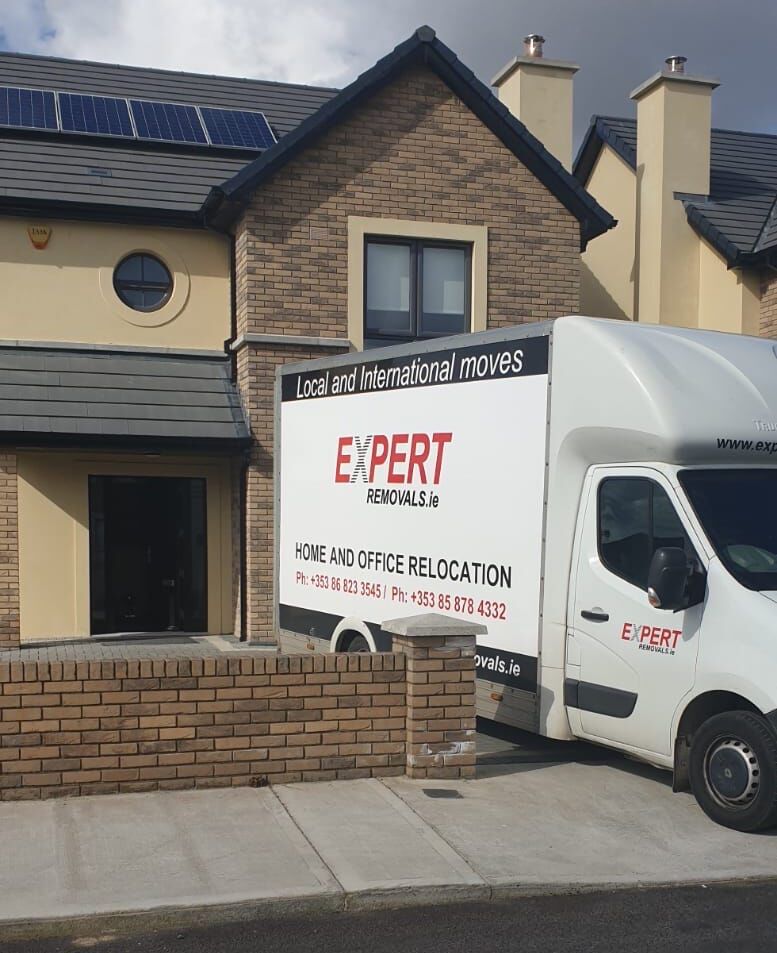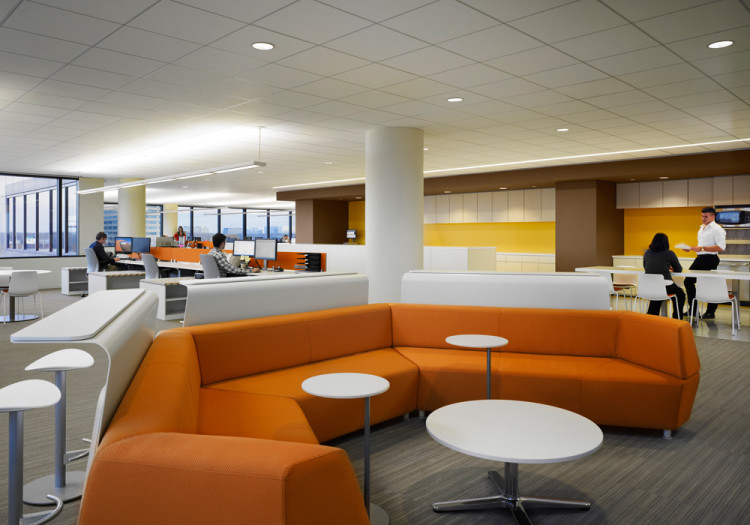
Dublin Office Moves
When it comes to relocating your office, a smooth and efficient transition is essential to minimize downtime, maintain productivity, and ensure a successful move.
Whether you are expanding your business, downsizing, or simply moving to a new location, the process of office moves can be complex and overwhelming.
However, with proper planning and execution, you can achieve a seamless transition that minimizes stress and disruption.
This article will explore the importance of smooth and efficient office moves and provide valuable tips and strategies to ensure a successful relocation.

Planning Your Office Move in Dublin
Factors to Consider Before Moving
Before embarking on an office move in Dublin, it’s essential to consider several factors that can impact the smoothness and efficiency of the transition. These factors include:
Location: Choose a new office location that is convenient for your employees and clients, considering factors such as accessibility, parking facilities, and proximity to public transportation.
Space Requirements: Evaluate the size of the new office space to ensure it can accommodate your current and future needs. Consider factors such as the number of employees, workspace configuration, meeting rooms, storage areas, and break rooms.
IT Infrastructure: Assess your current IT infrastructure and determine if any upgrades or changes are necessary in the new office. Consider factors such as internet connectivity, phone systems, data storage, and network security.
Furniture and Equipment: Determine if your existing furniture and equipment are suitable for the new office space or if replacements or additions are required. Consider factors such as desk layout, ergonomic chairs, conference room furniture, and technology equipment.
Legal and Compliance Requirements: Ensure compliance with local regulations, permits, licensing, and any legal requirements related to the office move. Consult with legal professionals, if necessary, to ensure a smooth and compliant transition.
Creating a Timeline and Checklist for the Transition
To ensure a smooth and efficient office move in Dublin, it’s crucial to create a comprehensive timeline and checklist. Consider the following steps:
Establish a Project Team: Assign a dedicated project team or designate a project manager responsible for overseeing and coordinating all aspects of the office move.
Set a Target Move Date: Determine the desired date for the move and work backward to establish a timeline for each phase of the transition, including planning, packing, moving, and unpacking.
Notify Stakeholders: Inform employees, clients, vendors, and other relevant stakeholders about the office move well in advance to minimize disruption and ensure a smooth transition.
Develop a Communication Plan: Create a communication plan to keep employees informed about the office move, including regular updates, FAQs, and contact information for any questions or concerns.
Inventory and Organize: Conduct a thorough inventory of all office furniture, equipment, and supplies. Determine what items will be moved, what will be disposed of or sold, and what will be purchased or leased for the new office.
Hire Professional Movers: Research and hire professional office movers with experience in handling office relocations. Ensure they have the necessary equipment, insurance, and expertise to manage the move efficiently.
Update Address and Contact Information: Notify relevant parties, such as clients, vendors, and service providers, of your new address and contact information. This includes updating your website, business cards, and any online listings.
Set Up Utilities and Services: Arrange for utilities, internet connectivity, phone lines, and any other necessary services to be set up and operational at the new office before the move.

Finding the Perfect Office Space in Dublin
Finding the perfect office space in Dublin can be a daunting task, but with the right tips and considerations, you can make the process smoother and more efficient.
Here are some tips to help you choose the right office space in Dublin:
Tips for Choosing the Right Office Space in Dublin
1. Location: Consider the location of the office space and its accessibility for your employees and clients. Look for a location that is convenient and well-connected to public transportation and amenities.
2. Size: Assess your current and future needs to determine the appropriate size of the office space. Consider factors such as the number of employees, workspace requirements, meeting rooms, and storage areas.
3. Amenities: Take into account the amenities and facilities provided in the office space. Look for features such as high-speed internet, conference rooms, parking facilities, and communal areas.
4. Budget: Set a clear budget for your office space and consider all costs, including rent, utilities, maintenance, and any additional fees. Ensure that the chosen office space aligns with your budgetary constraints.
Considerations for Location, Size, and Amenities
When choosing the office space in Dublin, it’s essential to consider the following factors:
Location: Dublin is a vibrant city with various business districts, including the IFSC the Silicon Docks, and the Dublin Docklands. Choose a location that aligns with your business needs and industry.
Size: Assess the size of the office space based on your current and future staffing requirements, as well as the need for meeting rooms, storage areas, and communal spaces.
Amenities: Consider the amenities required for your business operations, such as high-speed internet, IT infrastructure, meeting and conference facilities, and access to communal areas.
Flexibility: Evaluate the flexibility of the office space, including the terms of the lease, expansion options, and the possibility of scaling up or down as your business needs change.
Communication and Coordination
Effective Communication Strategies with Employees and Stakeholders
During an office move, effective communication is essential to ensure a smooth transition and to minimize disruptions for employees and stakeholders.
Here are some strategies to facilitate communication during the move:
1. Regular Updates: Keep employees and stakeholders informed about the progress of the move and any changes that may impact them. Regular email updates or meetings can help address any concerns and provide clarity.
2. Open Lines of Communication: Create channels for employees and stakeholders to ask questions or provide feedback. This could be through an email address or a dedicated person or team responsible for addressing queries.
3. Clear Instructions: Provide clear instructions to employees about packing and labeling items, as well as any specific requirements for the new office space. This will help ensure that everyone is on the same page and that items end up in the right place.
4. Training and Support: If there are any new systems or processes that need to be implemented in the new office, provide adequate training and support to employees to help them adapt smoothly.
Coordinating with Moving Companies and Service Providers
Coordinating with moving companies and service providers is crucial to ensure a seamless office move. Here are some key points to consider:
1. Detailed Planning: Work closely with the moving company to create a detailed plan, including timelines, responsibilities, and contingencies. This will help ensure that everything is organized and executed smoothly.
2. Regular Communication: Maintain regular communication with the moving company to address any questions or concerns. This will help you stay informed about the progress and make necessary adjustments, if needed.
3. Site Visit: Arrange a site visit with the moving company to assess the new office space and discuss any specific requirements or challenges. This will help them plan the move effectively.
4. Coordination with Service Providers: If there are any service providers involved in the move, such as IT support or furniture installation, ensure clear communication and coordination between all parties. This will help avoid any delays or complications.
IT and Infrastructure Setup
Transferring IT Systems and Infrastructure
During an office move, it is crucial to ensure a seamless transition of IT systems and infrastructure to minimize downtime and disruptions. Here are some key steps to consider:
Plan Ahead: Develop a detailed plan for transferring IT assets, including servers, computers, and networking equipment. This plan should outline the necessary timelines, resources, and contingencies.
Back Up Data: Prior to the move, back up all essential data to minimize the risk of data loss during the transition. This includes files, databases, and critical business applications.
Coordinate with IT Vendors: Communicate with IT vendors to coordinate the transfer of services, such as internet connectivity and telephone systems. Ensure that all necessary arrangements are made in advance.
Set Up the New Infrastructure: Install and configure the required IT infrastructure, including servers, network switches, and Wi-Fi access points, at the new office location. Test the systems to ensure they are functioning properly.
Migrate Data and Systems: Transfer all data and systems to the new infrastructure using a planned and systematic approach. This may involve physically moving servers and storage devices or using cloud-based solutions for data migration.
Test and Verify: Once the data and systems are migrated, thoroughly test and verify their functionality. Identify and resolve any issues to ensure a smooth transition.
Train Employees: Provide training to employees on the new IT systems and infrastructure. This will help them adapt quickly and efficiently to the changes.
Optimizing Network and Telecommunication Setup
To ensure a smooth office move, it is essential to optimize the network and telecommunication setup for the new location. Here are some key considerations:
Network Infrastructure: Assess the new office space for network infrastructure requirements. Install network cabling, switches, and routers to provide reliable and high-speed connectivity throughout the office.
Internet Connectivity: Coordinate with internet service providers to ensure a seamless transition of internet services to the new location. Test the connectivity and bandwidth to ensure it meets the needs of the business.
Telecommunication Systems: Evaluate the telecommunication needs of the office and install the necessary equipment, such as phone lines and VoIP systems. Test the telecommunication systems to ensure they are functioning properly.
Security and Firewall: Implement robust security measures, including firewalls and anti-virus software, to protect the network from cyber threats. Regularly update and monitor these systems to ensure the highest level of security.
VoIP and Unified Communications: Consider implementing VoIP systems and unified communications solutions to enhance collaboration and communication within the office. These systems can provide features such as video conferencing, instant messaging, and file sharing.
Office Design and Layout
Designing an Efficient and Productive Workspace
The design and layout of an office can greatly impact productivity and employee satisfaction. When planning your office move in Dublin, it’s important to consider the following factors for an efficient and productive workspace:
1. Natural Light: Incorporate as much natural light as possible by positioning workstations near windows and using glass partitions. Natural light has been shown to improve mood and increase productivity.
2. Open Spaces: Opt for open floor plans that encourage collaboration and communication among employees. Open spaces can foster a sense of community and creativity.
3. Ergonomic Furniture: Invest in ergonomic furniture that promotes good posture and reduces the risk of musculoskeletal issues. Comfortable and adjustable chairs and standing desks can improve employee well-being and productivity.
4. Noise Control: Implement acoustic solutions such as soundproof panels and carpeting to reduce noise levels in the office. A quiet environment can help employees focus and concentrate.
5. Breakout Areas: Design designated breakout areas where employees can relax, socialize, and recharge. These areas can boost morale and foster a positive work culture.
Tips for Furniture and Layout Selection
When selecting furniture and designing the layout of your new office in Dublin, keep the following tips in mind:
- Choose modular and flexible furniture that can adapt to the changing needs of your business.
- Prioritize functionality and comfort over aesthetics.
- Consider the flow of movement within the office and ensure that workstations are easily accessible.
- Create designated spaces for different activities, such as meeting rooms, quiet zones, and collaborative areas.
- Use color strategically to create a pleasant and inspiring work environment.
- Incorporate greenery and plants to improve air quality and create a calming atmosphere.

Managing Change and Employee Transition
Change Management Strategies for Office Moves
Managing change is essential when it comes to office moves. Here are some strategies to ensure a smooth transition and minimize any potential disruptions:
1. Communication: Communicate with employees throughout the entire moving process. Keep them informed about the reasons for the move, the timeline, and any changes that may affect their work environment. Encourage open communication and address any concerns or questions they may have.
2. Planning and Preparation: Develop a detailed plan for the office move, including a timeline and checklist of tasks. Remember to involve key stakeholders and departments to ensure a coordinated effort. Adequate preparation and planning will help minimize downtime and disruptions.
3. Employee Involvement: Involve employees in the decision-making process when possible. Seek their input on the new office layout, furniture, and amenities. Involvement can help build a sense of ownership and make the transition smoother.
4. Training and Support: Provide training and support to employees to help them adapt to any new technology, systems, or processes that may be implemented with the move. Offer resources and assistance to guide them through the transition.
Ensuring Minimal Disruption to Employee Productivity
Minimizing disruption to employee productivity is crucial during an office move. Here are some strategies to ensure a seamless transition:
1. Temporary Workspace: If feasible, provide temporary workspaces for employees during the move. This could include remote work options, shared coworking spaces, or temporary offices. Ensure these spaces are equipped with the necessary resources and technology.
2. Set Up IT Infrastructure in Advance: Ensure that the IT infrastructure, including internet connectivity, phone systems, and network access, is set up and tested before employees move into the new office. This will help prevent any extended downtime and frustration.
3. Office Setup and Logistics: Coordinate with vendors and facility management to ensure all furniture, equipment, and supplies are delivered and set up on time. Make sure the new office space is functional and ready for employees to start working.
4. Employee Support: Provide support to employees during the transition. This could include additional training, on-site assistance, or access to resources that help them adjust to the new office environment.
Logistics and Moving Day
Managing Logistics and Transportation of Office Equipment and Furniture
When it comes to a seamless office move in Dublin, one of the most crucial aspects is managing the logistics and transportation of office equipment and furniture.
Here are some key steps to ensure a smooth transition:
- Start by creating a detailed inventory of all the items that need to be moved. This will help you keep track of everything and ensure that nothing gets lost or misplaced during the move.
- Determine the best mode of transportation for your office equipment and furniture. Depending on the size and quantity of items, you may opt for a moving truck, van, or professional moving service.
- Make sure to properly pack and protect your office equipment and furniture. Use sturdy boxes, bubble wrap, and packing tape to secure items and prevent damage during transit.
- Label all boxes and furniture with their respective room locations in the new office. This will save time and confusion during the unpacking process.
- Plan for any special handling requirements, such as disassembling and reassembling furniture or handling fragile and sensitive equipment. Hiring professional movers can help ensure that these tasks are done correctly.
- Coordinate with building management and any necessary permits or parking arrangements for moving day. This will help prevent any delays or logistical issues on the day of the move.
Preparing for Move-In Day
As the moving day approaches, it’s essential to prepare for a smooth move-in process in the new office space. Here are some tips to help you get ready:
- Coordinate with the building management team to schedule a convenient move-in date and time. This will ensure that there are no conflicts or logistical issues on the day of the move.
- Communicate the move-in details to your employees and provide them with any necessary instructions or guidelines regarding their workspaces in the new office.
- Set up a plan for unpacking and organizing each department’s belongings in the new office. This will help streamline the process and ensure that everyone can get back to work as quickly as possible.
- Test and set up any necessary IT infrastructure, such as computers, internet connections, and phone systems, before employees arrive at the new office.
- Schedule a walk-through of the new office space to ensure that everything is in order and ready for move-in day. This includes checking for any repairs or maintenance issues that need to be addressed.
- Finally, celebrate the successful move with your team! Moving to a new office is a significant milestone, and taking the time to acknowledge and appreciate everyone’s hard work can help boost morale and create a positive work environment in the new space.
By carefully managing the logistics and preparing for move-in day, you can ensure that your office move in Dublin is smooth, efficient, and minimally disruptive to your business operations.

Testing and Quality Assurance
Testing IT Systems and Infrastructure in the New Office
Once the Dublin office move is complete, it is essential to conduct thorough testing and quality assurance to ensure that all IT systems and infrastructure are functioning properly.
This step is crucial to avoid any potential issues or disruptions that may arise in the new office environment. Here are some key considerations for testing and quality assurance:
Network Infrastructure: Test the network connectivity, including wired and wireless connections, to ensure that all devices can connect seamlessly and efficiently. Conduct speed tests and monitor network performance to identify any potential bottlenecks.
Hardware and Equipment: Test all hardware components, including computers, servers, printers, and other devices, to ensure that they are functioning correctly in the new office. Check for any hardware compatibility issues and address them promptly.
Software and Applications: Test all software and applications used by employees to ensure that they are compatible with the new office environment. Conduct thorough testing to identify any bugs, glitches, or compatibility issues and work with software vendors to address them.
Data Migration: Verify that all data has been successfully migrated from the old office to the new office without any data loss or corruption. Test data accessibility and integrity to ensure that all files and information can be accessed and used as needed.
Security Systems: Test the effectiveness of security systems, including firewalls, antivirus software, access control systems, and video surveillance systems. Ensure that all security measures are properly configured and functioning to protect the company’s sensitive data and infrastructure.
Communication Systems: Test the functionality of communication systems, including phone lines, VoIP systems, video conferencing systems, and email servers. Conduct test calls and videoconferences to ensure that communication channels are clear, reliable, and uninterrupted.
Disaster Recovery and Backup Systems: Test the disaster recovery and backup systems to ensure that they are capable of restoring data and systems in the event of a failure or disaster. Conduct regular backup tests and simulate various disaster scenarios to validate the effectiveness of these systems.
User Acceptance Testing: Involve employees in the testing process by conducting user acceptance testing. Gather feedback from employees regarding any issues or improvements needed for the IT systems and infrastructure in the new office. Address any user concerns and provide necessary training or support.
By conducting thorough testing and quality assurance, the Dublin office can ensure a seamless transition and minimize any disruptions or downtime. It is important to allocate sufficient time and resources for testing and address any identified issues promptly to ensure smooth and efficient operations in the new office environment.

Employee Onboarding and Orientation
Welcoming Employees to the New Office Space
When it comes to office moves, it’s essential to ensure a smooth transition for employees. Here are some tips for welcoming employees to the new office space:
1. Communication: Keep employees informed about the office move process and provide regular updates on the timeline and any changes that may affect their work.
2. Orientation: Plan an orientation session to familiarize employees with the new office layout, facilities, and amenities. This will help them navigate the space and settle in quickly.
3. Welcoming Committee: Assign a welcoming committee or buddy system to pair new employees with existing ones. This will help foster a sense of belonging and help new employees integrate into the team.
4. Employee Feedback: Encourage employees to provide feedback on the new office space and address any concerns or suggestions they may have. This will help improve the working environment and ensure employee satisfaction.
5. Office Amenities: Highlight the various amenities available in the new office, such as the cafeteria, gym, or relaxation areas. This will help employees take full advantage of the facilities and promote a healthy work-life balance.
6. Team Building Activities: Organize team building activities or social events to help employees bond and build relationships in the new office. This will create a positive and inclusive work culture.
Office Movers Dublin
A seamless and efficient office move is crucial for the success and productivity of any business. Whether you’re relocating to Dublin or moving within the city, following these key takeaways will help ensure a smooth transition:
Key Takeaways for a Smooth and Efficient Office Move:
- Plan ahead and create a detailed timeline for the move, including tasks and deadlines.
- Communicate with your employees about the move, keeping them informed and involved throughout the process.
- Hire professional movers who specialize in office relocations to ensure a smooth and efficient move.
- Pack and label items properly to minimize downtime and make unpacking and setting up the new office easier.
- Update your address and contact information with clients, vendors, and service providers.
- Test and update your IT infrastructure before and after the move to minimize technical disruptions.
- Take the opportunity to declutter and reorganize your office space to improve productivity and efficiency.
Benefits of a Seamless Transition in Dublin Offices:
A seamless transition in Dublin offices offers several benefits for businesses:
Minimize Downtime: By planning and executing a smooth move, you can minimize downtime and ensure uninterrupted business operations.
Boost Employee Morale: A well-executed move shows your employees that you value their comfort and well-being, boosting morale and productivity.
Positive Brand Image: A seamless transition reflects positively on your brand, showcasing your professionalism and commitment to customer satisfaction.
Improved Efficiency: A well-organized office space can improve workflow and collaboration among employees, leading to increased efficiency and productivity.
Customer Satisfaction: A smooth move ensures that your customers experience minimal disruptions, maintaining their trust and satisfaction.
By following these tips and focusing on a smooth and efficient move, businesses can transition to their new Dublin office seamlessly, minimizing disruptions and reaping the benefits of an optimized work environment.






